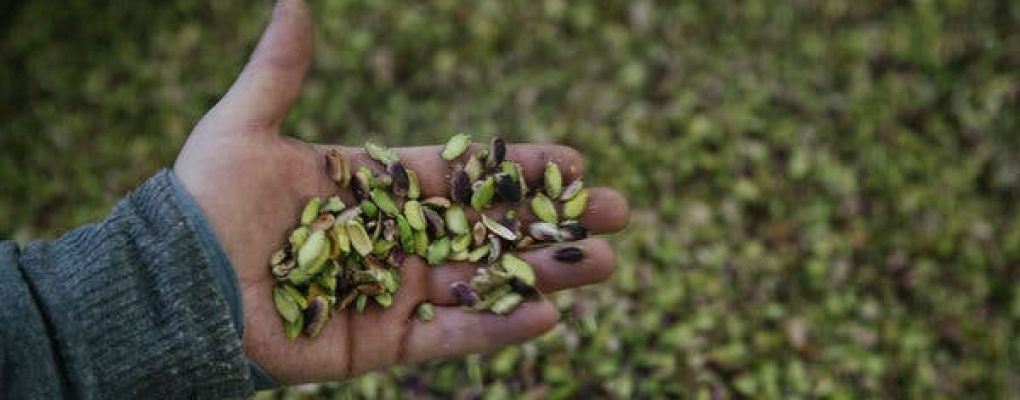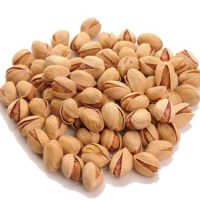— Sicilian Pistachios —
Sicilian Pistachios :
Today, most of the pistachios consumed in Italy are imported from Iran and Iraq. That wasn’t always the case. Throughout the middle Ages, the pistachios eaten by Sicilians came from eastern Sicily, where they are still grown, particularly around Mount Etna and in the Bronte area.
Please for more information or any inquiry click here ……
Traditionally cultivated in India, central Asia, the Middle East and the eastern Mediterranean, pistachios were introduced in Sicily in ancient times, probably by the Phoenicians, the Sisals or the earliest Greek colonizers. There is little doubt that the ninth-century Arab rulers of Sicily encouraged the wider cultivation of the tasty nuts.
It was probably the Saracen Arabs who began the practice of radically pruning pistachio trees every two years to increase nut production.
https://www.irandriedfruit.com/american-pistachio/
Pistachios found their way into many of the sweet confections still made today, created in Arab Sicily using cane sugar.
That’s how most of Sicily’s pistachio production is now used –either in pastries or in pistachio ice cream.
Sicilian pistachios are slightly longer and thinner than those grown in the Middle East. They also seem to have a stronger, sharper taste, due perhaps in part to the volcanic soil in which they’re grown.
https://www.irandriedfruit.com/iran-pistachio/
They are not exported in large quantities. Unlike olive growers, pistachio farmers receive little economic support from the Italian government. Here in Sicily, almonds seem to have been preferred to pistachios, probably because the cultivation of pistachios was historically more difficult.
Almond trees, which require somewhat less water, seem generally hardier than pistachio plants. Sicily is suffering an extended drought; in recent years, decreased annual precipitation has reduced the quantity, but not the quality, of Sicilian pistachios.
Pistachio Vera is the edible variety of pistachio grown in warm, dry climates around the world, even in California. The pistachio tree is an evergreen native to Asia, and the very word traces the fruit’s origin. The English word pistachio comes to us from the Old Italian pistachio (“pistachio” in modern Italian), from the Greek pistachio, which in turn derives from an Old Persian word.
Pistachios are a good source of protein, fat, fiber, vitamin B6 and thiamine. The mature kernels are generally greenish with reddish areas, assuming a brownish color when toasted. However, it is possible to eat them dried rather than toasted.
idly regarded as a snack food, pistachios are well-suited to Italian recipes, including some that call for pine nuts. Pistachios are excellent in rice dishes or as a garnish in main courses.
To prepare pistachios in this way, simply remove them from the shell, allowing the kernels to soak for at least an hour in cold water flavored with lemon juice. In this way, the tender pistachios will reveal their truest flavor.
A restaurant in Palermo serves tender Sicilian pistachios over gnocchi as part of a delicious gorgonzola (blue cheese) sauce
Please for more information or any inquiry click here ……
All Type Of Pistachios
-
Round Pistachio | Fandoghi Pistachio Special price + analysis + sale offer
Round Iranian Fandoghi Pistachio High Quality Only for Export : This type of Pistachio is the least expensive type among all the pistachios. The reason why its price is lower than other types is because of its shape and high…
-
iranian Ahmad Aghaei Pistachio Special price + analysis + sale offer
Ahmad Aghaei Pistachio ( Long iranian Pistachios ) : This type of Pistachio (Long Ahmad Aghaei Pistachio) is one of the popular types. The reason why it is popular than the other type of pistachio is that it has the…
-
Iranian Jumbo Pistachio | Kale Ghuchi Pistachio Special price + analysis
This type of Pistachio is the most delicious type among all the pistachios. The reason why it is tastier than the others is it is fattier. The color of the Jumbo Pistachio shell is naturally light cream. As it is…
-
pistachio kernel Special wholesale price + analysis + sale offer
Producers make Pistachio Kernel from all types of Pistachios. A quality factor for kernels is their sizes. The more the color of the kernel`s second skin is violet and sharp the more it is popular among users. Higher the level…
-
Green Pistachio Kernel ( GPPK ) Special wholesale price + analysis
Producers make Pistachio Kernel from all types of Pistachios. A quality factor for kernels is their sizes. The more the color of the kernel`s second skin is violet and sharp the more it is popular among users. Higher the level…













 3 kind raisin
3 kind raisin 


